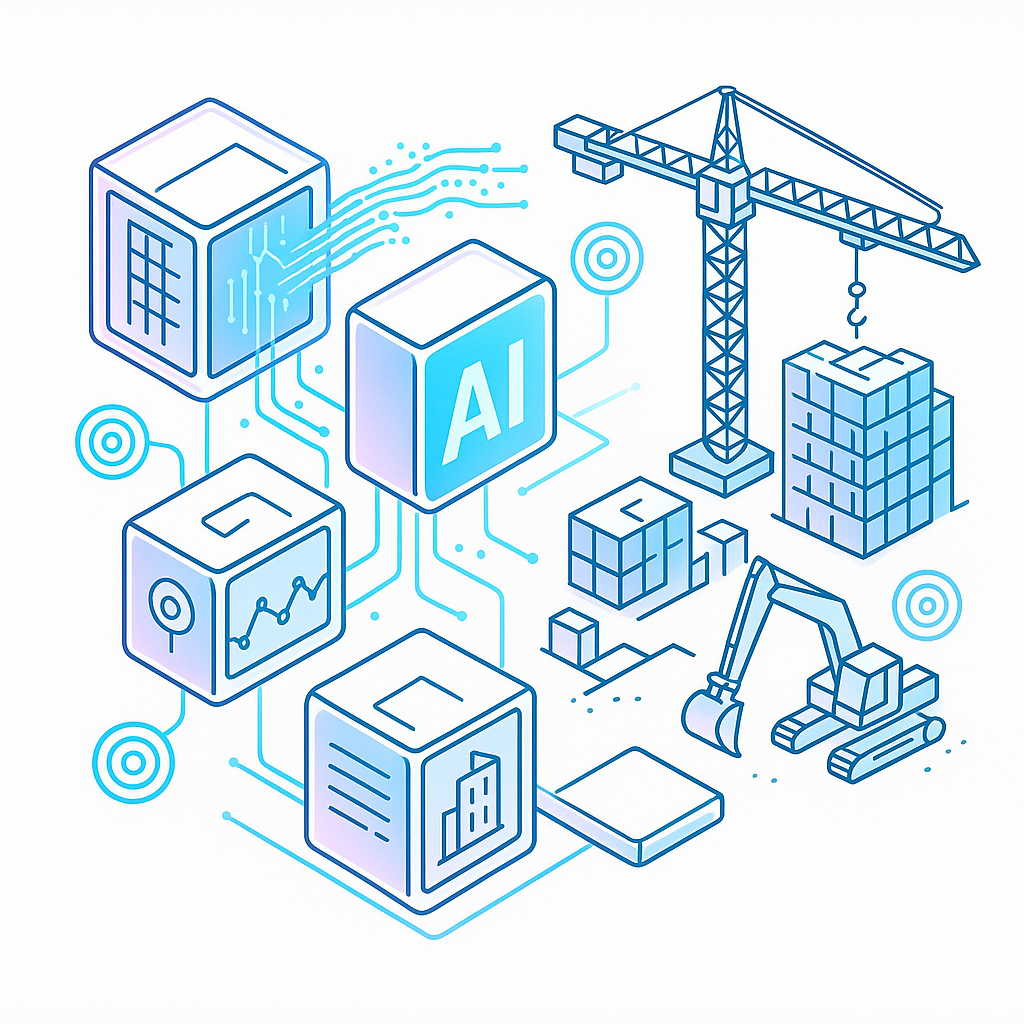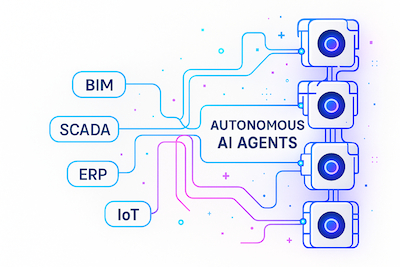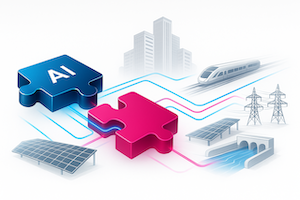AI-Powered Modular Digital Twins: Transforming Systems Engineering in Construction, Infrastructure, and Energy
By Christian van Eken on Aug 19, 2025 9:47:18 AM

Summary
AI-powered modular digital twins are reshaping systems engineering (SE) across the construction, infrastructure, and energy sectors. By combining modular digital twin architectures with artificial intelligence, organizations gain capabilities in real-time monitoring, predictive maintenance, and lifecycle optimization. This article distills actionable insights from leading industry and academic research (SERC, MITRE, INCOSE, MDPI, ScienceDirect, InnovateEnergy) and aligns them with Basewise’s modular, data-driven methodology to help mid-sized organizations unlock measurable business value, enhance asset performance, and drive strategic transformation.
Key takeaways
The Rise of Modular, AI-Powered Digital Twins in Systems Engineering
Market Drivers and Strategic Context
The construction, infrastructure, and energy sectors face mounting pressures: sustainability, operational efficiency, regulatory compliance, and the need to modernize legacy systems. Recent reports (SERC, INCOSE Vision 2035, ScienceDirect) position modular digital twins as a cornerstone of digital transformation, enabling organizations to model, simulate, and optimize complex assets with unprecedented agility.
AI amplifies these benefits by automating data analysis, enabling predictive maintenance, and supporting continuous lifecycle management. Model-Based Systems Engineering (MBSE) and modular digital twins are now central to agile development and resilient infrastructure delivery.
Key drivers:
-
The demand for data-driven sustainability and resource optimization.
-
Increasing complexity and scale of assets (from buildings to grids).
-
Regulatory mandates for transparency, traceability, and risk management.
-
Acceleration of digital transformation initiatives in mid-sized organizations.
Modular Digital Twin Architectures: Principles and Sector Impact
Why Modularity Matters
Traditional digital twins are often monolithic, asset-specific, and difficult to scale. Modular digital twins, as defined in recent research, decompose systems into interoperable components, enabling:
-
Rapid prototyping and iterative development.
-
Flexible integration with both legacy and emerging technologies.
-
Scalable deployment across systems of systems.
-
Enhanced lifecycle traceability and compliance.
Basewise mirrors these principles through plug-and-play modular architectures, supported by open standards and intelligent orchestration.
Sector Impact
-
Construction: Streamlining off-site construction, cost modeling, and project delivery.
-
Infrastructure: Real-time monitoring, predictive maintenance, and adaptive control for roads, bridges, and utilities.
-
Energy: Grid optimization, asset health management, and decarbonization strategies.
AI Integration: Real-Time, Predictive, and Adaptive SE
AI transforms digital twins from static representations into active, learning systems. Core advances include:
-
Predictive Maintenance: Forecasting failures and optimizing maintenance schedules.
-
Real-Time Monitoring: Analyzing sensor and operational data for actionable insights.
-
Lifecycle Optimization: Simulating scenarios, informing design decisions, and adapting to evolving requirements.
Challenges include model drift, ethical compliance, validation, and resilience against cyber threats. Still, AI-enabled feedback loops accelerate agile development and continuous improvement.
Overcoming Integration Challenges: Legacy Systems, Data Quality, and Cyber Resilience
Barriers to Adoption
Despite their promise, modular AI-powered twins face practical hurdles:
-
Legacy Integration: Organizations often rely on siloed, outdated systems. Modular open standards are vital for phased adoption.
-
Data Quality: High-quality, curated datasets are essential for reliable AI-driven insights.
-
Cybersecurity: Expanded attack surfaces increase risks such as adversarial attacks and data poisoning. MITRE highlights secure-by-design architectures and threat-informed defense as strategic imperatives.
Basewise emphasizes secure, resilient adoption pathways, guiding clients through phased transformation from legacy to modular AI-driven systems.
Practical Use Cases: Business Value Delivered
-
Construction: AI-driven twins enhance off-site construction and cost modeling accuracy, enabling better transparency and risk management.
-
Infrastructure: Predictive maintenance reduces downtime, extends asset lifespan, and optimizes lifecycle costs.
-
Energy: Grid management and sustainability strategies powered by AI simulations improve efficiency and regulatory compliance.
-
Risk Management: Modular architectures improve traceability, scenario planning, and compliance reporting across all sectors.
Trends, Insights, and Strategic Recommendations
Key Trends
-
Modular, AI-powered digital twins are moving from experimental to mainstream.
-
The convergence of AI, digital twins, and BIM is driving smarter, more collaborative projects.
-
Security, interoperability, and data governance are top concerns for mid-sized organizations scaling adoption.
Recommendations for Leaders
-
Start Small, Scale Smart: Pilot modular architectures before broad rollout.
-
Invest in Data Quality: Standardize, curate, and validate datasets.
-
Collaborate Early: Bring IT, operations, and compliance stakeholders into the process.
-
Build for Resilience: Prioritize cybersecurity and governance frameworks.
-
Adopt Continuous Learning: Use AI-driven analytics to drive incremental improvements.
Conclusion
AI-powered modular digital twins represent the future of systems engineering in construction, infrastructure, and energy. By embracing modularity, data-driven processes, and secure AI integration, organizations can unlock measurable business value and lead the next wave of digital transformation.
The future is modular, intelligent, and collaborative—those who act now will set the pace for the industry.
Basewise’s invitation: Share your challenges and lessons learned. Together, we can shape the future of modular, AI-driven systems engineering.
You May Also Like
These Related Stories

Agentic AI & Modular Automation: Shaping construction, infrastructure, and energy

Digital Transformation: Modular AI & MBSE in 2025
.png)
.png?width=919&height=338&name=BASEWISE.AI%20THEME%20(23).png)
